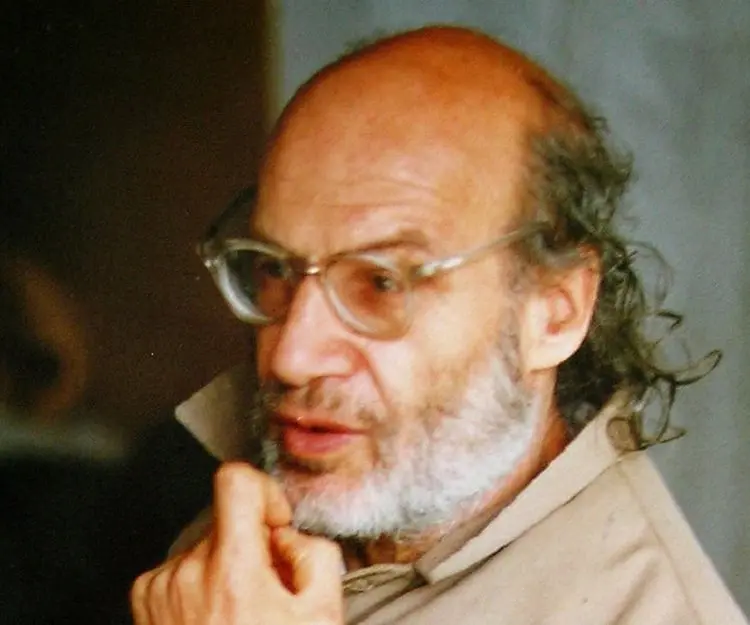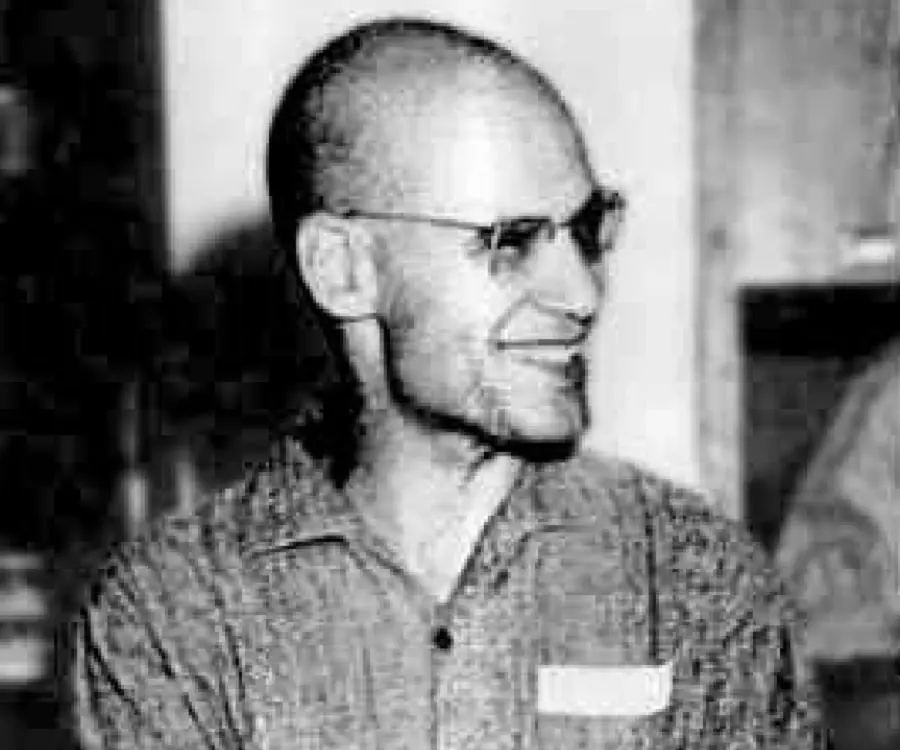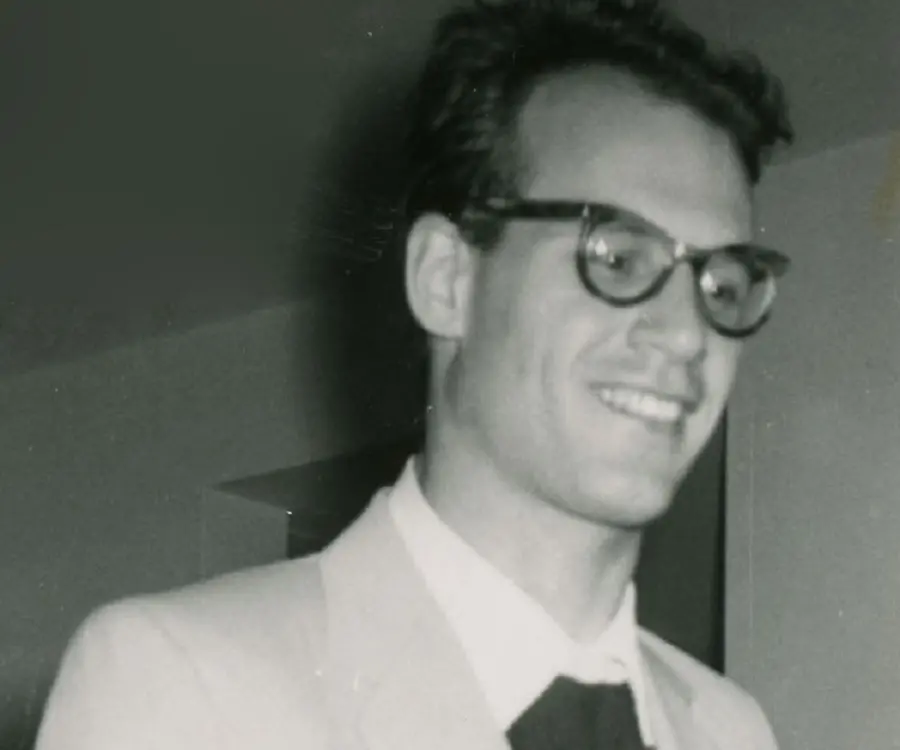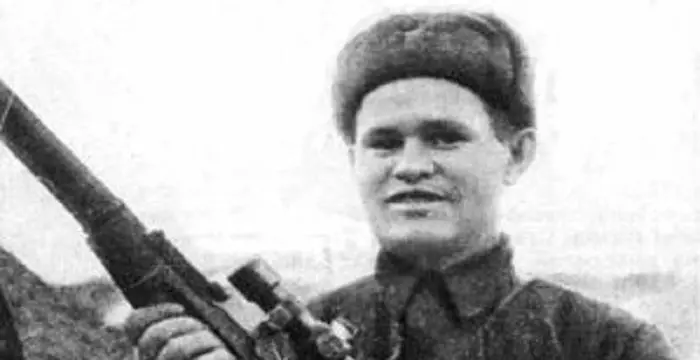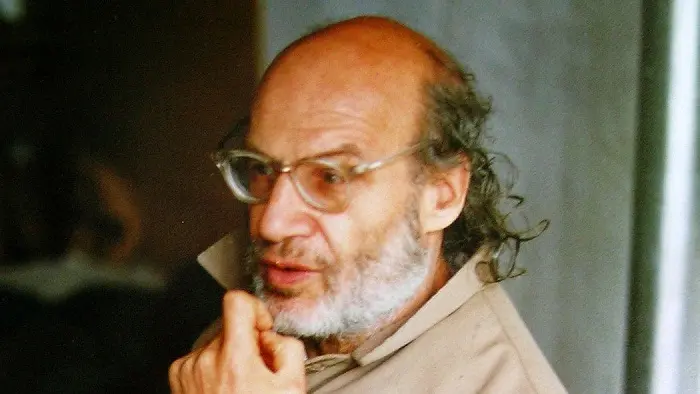
Alexander Grothendieck - Mathematicians, Life Achievements and Family
Alexander Grothendieck's Personal Details
Alexander Grothendieck was a German-born French mathematician who made significant contributions to algebraic geometry
| Information | Detail |
|---|---|
| Birthday | March 28, 1928 |
| Died on | November 13, 2014 |
| Nationality | French |
| Famous | Scientists, Mathematicians |
| Universities |
|
| Birth Place | Berlin, Prussia, Germany |
| Gender | Male |
| Father | Alexander |
| Mother | Johanna |
| Sun Sign | Aries |
| Born in | Berlin, Prussia, Germany |
| Famous as | Mathematician |
| Died at Age | 86 |
// Famous Mathematicians
Grigori Perelman
Grigori Perelman is a Russian mathematician who is best known for his contributions to Riemannian geometry and geometric topology. Check out this biography to know about his childhood, family life, achievements and fun facts about him.
Terence Tao
Terence Tao is an Australian- American mathematician who has contributed enormously to the field of mathematics. Check out this biography to know about his childhood, family life and achievements.
Isaac Newton
Isaac Newton was an English scientist and mathematician, who discovered gravitation and Newtonian Mechanics. Read this biography to find more on his life.
Alexander Grothendieck's photo
Who is Alexander Grothendieck?
Alexander Grothendieck was a German-born French mathematician who made significant contributions to algebraic geometry. One of the pioneers in the field of modern algebraic geometry, he added elements of commutative algebra, homological algebra, sheaf theory and category theory to its foundations. Regarded as one of the greatest pure mathematicians of the second half of the 20th century, he reformulated algebraic geometry so as to enable geometric methods to be applied to problems in number theory. Born in Germany, he moved to France with his mother during the World War II. His early life was very difficult, and he spent several years in camps for people displaced during the war. As a refugee child, he attended a secondary school founded by local Protestant pacifists and anti-war activists. He became fascinated with mathematics and received his higher education from University of Montpellier and University of Nancy. Soon he embarked on a very productive career as a mathematician and became a leading expert in the theory of topological vector spaces. He was a brilliant mathematician who made major contributions to algebraic geometry, number theory, topology, category theory and complex analysis. However, he abandoned his thriving academic career in the 1970s and retired into obscurity a few years later.
// Famous Scientists
Juliane Koepcke
Juliane Koepcke is a German-Peruvian biologist, who was the lone survivor among the 92 passengers and crew of the ill-fated LANSA Flight 508 that crashed in the Peruvian rainforest on 24 December 1971. Know more about her life in this biography.
Henry Cavendish
Henry Cavendish was a theoretical chemist and physicist, renowned for discovery of hydrogen and calculation of the mass of earth. To know more about his childhood, profile, timeline and career read on
Konstantin Tsiolkovsky
Konstantin Tsiolkovsky was a Russian rocket scientist and a pioneer of astronautics. This biography provides detailed information about his childhood, family, personal life, career, achievements, etc.
Childhood & Early Life
Alexander Grothendieck was born on 28 March 1928 in Berlin, Germany to anarchist parents. His mother’s name was Johanna "Hanka" Grothendieck and she was married to the journalist Johannes Raddatz at the time of Alexander’s birth. However, Alexander’s biological father was Alexander "Sascha" Schapiro (also known as Alexander Tanaroff). His mother’s marriage to Johannes Raddatz ended in 1929.
He lived with his parents till 1933 when his father moved to Paris to evade Nazism. His mother too followed suit, leaving behind her little son in the care of Wilhelm Heydorn, a Lutheran pastor and teacher.
Alexander went to France during the World War II in 1939 and lived with his mother in various camps for displaced people. They spent the later years of the war in the village of Le Chambon-sur-Lignon, sheltered and hidden in local boarding houses. His father was killed in the Auschwitz concentration camp in 1942.
He attended the Collège Cévenol (now known as the Le Collège-Lycée Cévenol International), a secondary school founded in 1938 by local Protestant pacifists and anti-war activists. It was at this school that he discovered his love for mathematics.
After the war he studied mathematics at the University of Montpellier. Working on his own he rediscovered the Lebesgue measure, and conducted several independent studies over the next three years.
In 1950 he moved to the University of Nancy where he wrote his dissertation under Laurent Schwartz and Jean Dieudonné in functional analysis and received his doctorate in 1953. By this time he had become a leading expert in the theory of topological vector spaces.
From 1957 onwards, he shifted the focus of his studies to algebraic geometry and homological algebra.
Career
Alexander Grothendieck spent several years travelling and teaching in Brazil and America before returning to France in 1956. He accepted an appointment as a professor in the newly-established Institut des hautes études scientifiques (IHÉS) in Bures-sur-Yvette in 1959.
In his years with the IHES, he completely revolutionized the theory of algebraic geometry. He received much acclaim for his work and had brilliant students like Michel Demazure, Michel Raynaud, Jean-Louis Verdier, Jean Giraud, and Pierre Deligne.
He worked for more than a decade at the IHES during the course of which he established several unifying themes in algebraic geometry, number theory, topology, category theory and complex analysis. He also provided an algebraic definition of fundamental groups of schemes.
Assisted by Jean Dieudonné, he published ‘The Éléments de géométrie algébrique’ ("Elements of Algebraic Geometry"), a treatise on algebraic geometry, published in eight parts from 1960 to 1967. In the volumes he established systematic foundations of algebraic geometry, building upon the concept of schemes.
As someone who had suffered greatly because of the war, he was a pacifist at heart. He had radical political views and was strongly opposed to both United States intervention in Vietnam and Soviet military expansionism. In 1970 he realized that the IHES was partly funded by the military and resigned from his job and retired from scientific life.
He teamed up with two other mathematicians, Claude Chevalley and Pierre Samuel, to create a political group called Survivre—the name later changed to Survivre et vivre, in 1970. The group was dedicated to antimilitary and ecological issues, and also developed strong criticism of the indiscriminate use of science and technology.
He returned to the academia as a professor at the University of Montpellier. However, he became increasingly estranged from the mathematical community and formally retired in 1988.
Major Works
The most influential works of Alexander Grothendieck were in the field of algebraic geometry. His article, ‘Sur quelques points d'algèbre homologique’, also known as "Tôhoku paper" is considered to be one of his most important works. In this paper, he introduced abelian categories and applied their theory to show that sheaf cohomology can be defined as certain derived functors in this context.
Awards & Achievements
In 1966, he received the Fields Medal which is often described as the "Nobel Prize of Mathematics". His citation read "Built on work of Weil and Zariski and effected fundamental advances in algebraic geometry. He introduced the idea of K-theory (the Grothendieck groups and rings). Revolutionized homological algebra in his celebrated "Tohoku paper"”.
He was awarded the Crafoord Prize in 1988 which he declined to accept, much to the astonishment of the mathematical fraternity.
Personal Life & Legacy
Alexander Grothendieck was once married to a woman called Mireille Dufour and had three children with her.
He also had a son with his landlady during his time in Nancy and one child with a woman named Justine Skalba, with whom he lived in a commune in the early 1970s.
He became increasingly reclusive during the later years of his life. In 1991, Grothendieck moved to a new address which he shared with only a few of his contacts.
He died in the hospital of Saint-Girons, Ariège, on 13 November 2014, aged 86. At the time of his death, it was revealed that he had been living alone.
// Famous French peoples
Simone Signoret
Simone Signoret was a French actress who became the first French person to win an Academy Award. Check out this biography to know about her childhood, family life, achievements and other facts related to her life.
Jade Weber
Scroll down this bio to find out everything about French model Jade Weber. Be it fun facts, birthday, trivia or details of her personal and family life, you’ll find everything here.
Micheline Roquebrune
Micheline Roquebrune is a petite Moroccan-French painter best known as the third wife the legendary Scottish actor Sir Sean Connery. Check out this biography to know about her birthday, childhood, family life, achievements and fun facts about her.
Alexander Grothendieck's awards
| Year | Name | Award |
|---|---|---|
Other | ||
| 0 | Fields Medal (1966) | |
| 0 | Crafoord Prize (1988) | |
Alexander Grothendieck biography timelines
- // 28th Mar 1928Alexander Grothendieck was born on 28 March 1928 in Berlin, Germany to anarchist parents. His mother’s name was Johanna "Hanka" Grothendieck and she was married to the journalist Johannes Raddatz at the time of Alexander’s birth. However, Alexander’s biological father was Alexander "Sascha" Schapiro (also known as Alexander Tanaroff). His mother’s marriage to Johannes Raddatz ended in 1929.
- // 1933He lived with his parents till 1933 when his father moved to Paris to evade Nazism. His mother too followed suit, leaving behind her little son in the care of Wilhelm Heydorn, a Lutheran pastor and teacher.
- // 1938He attended the Collège Cévenol (now known as the Le Collège-Lycée Cévenol International), a secondary school founded in 1938 by local Protestant pacifists and anti-war activists. It was at this school that he discovered his love for mathematics.
- // 1939 To 1942Alexander went to France during the World War II in 1939 and lived with his mother in various camps for displaced people. They spent the later years of the war in the village of Le Chambon-sur-Lignon, sheltered and hidden in local boarding houses. His father was killed in the Auschwitz concentration camp in 1942.
- // 1950 To 1953In 1950 he moved to the University of Nancy where he wrote his dissertation under Laurent Schwartz and Jean Dieudonné in functional analysis and received his doctorate in 1953. By this time he had become a leading expert in the theory of topological vector spaces.
- // 1956 To 1959Alexander Grothendieck spent several years travelling and teaching in Brazil and America before returning to France in 1956. He accepted an appointment as a professor in the newly-established Institut des hautes études scientifiques (IHÉS) in Bures-sur-Yvette in 1959.
- // 1957From 1957 onwards, he shifted the focus of his studies to algebraic geometry and homological algebra.
- // 1960 To 1967Assisted by Jean Dieudonné, he published ‘The Éléments de géométrie algébrique’ ("Elements of Algebraic Geometry"), a treatise on algebraic geometry, published in eight parts from 1960 to 1967. In the volumes he established systematic foundations of algebraic geometry, building upon the concept of schemes.
- // 1966In 1966, he received the Fields Medal which is often described as the "Nobel Prize of Mathematics". His citation read "Built on work of Weil and Zariski and effected fundamental advances in algebraic geometry. He introduced the idea of K-theory (the Grothendieck groups and rings). Revolutionized homological algebra in his celebrated "Tohoku paper"”.
- // 1970As someone who had suffered greatly because of the war, he was a pacifist at heart. He had radical political views and was strongly opposed to both United States intervention in Vietnam and Soviet military expansionism. In 1970 he realized that the IHES was partly funded by the military and resigned from his job and retired from scientific life.
- // 1970He teamed up with two other mathematicians, Claude Chevalley and Pierre Samuel, to create a political group called Survivre—the name later changed to Survivre et vivre, in 1970. The group was dedicated to antimilitary and ecological issues, and also developed strong criticism of the indiscriminate use of science and technology.
- // 1988He returned to the academia as a professor at the University of Montpellier. However, he became increasingly estranged from the mathematical community and formally retired in 1988.
- // 1988He was awarded the Crafoord Prize in 1988 which he declined to accept, much to the astonishment of the mathematical fraternity.
- // 1991He became increasingly reclusive during the later years of his life. In 1991, Grothendieck moved to a new address which he shared with only a few of his contacts.
- // 13th Nov 2014He died in the hospital of Saint-Girons, Ariège, on 13 November 2014, aged 86. At the time of his death, it was revealed that he had been living alone.
// Famous Aries Celebrities peoples
Skai Jackson
Skai Jackson is an American child actress with huge fan following. Find more about her family & personal life, relationships, facts and more.
Shemar Moore
Shemar Moore is a model turned actor best known for his role in the television series ‘The Young and the Restless’. This biography of Shemar Moore provides detailed information about his childhood, life, achievements, works & timeline.
Vasily Zaytsev
Vasily Zatysev was a Russian sniper who served during the World War II. Check out this biography to know about his childhood, family life, achievements and fun facts about him.
Ivey Meeks
Ivey Meeks is an American YouTube star and model. Let’s have a look at her family and personal life including age, date of birth, net worth, boyfriends and fun facts.
Tobi Lerone
Check out all that you wanted to know about Tobi Lerone, the famous YouTube Personality and gamer; his birthday, his family and personal life, his girlfriends, fun trivia facts and more.
Simone Signoret
Simone Signoret was a French actress who became the first French person to win an Academy Award. Check out this biography to know about her childhood, family life, achievements and other facts related to her life.
Alexander Grothendieck's FAQ
What is Alexander Grothendieck birthday?
Alexander Grothendieck was born at 1928-03-28
When was Alexander Grothendieck died?
Alexander Grothendieck was died at 2014-11-13
Where was Alexander Grothendieck died?
Alexander Grothendieck was died in Saint-Lizier, France
Which age was Alexander Grothendieck died?
Alexander Grothendieck was died at age 86
Where is Alexander Grothendieck's birth place?
Alexander Grothendieck was born in Berlin, Prussia, Germany
What is Alexander Grothendieck nationalities?
Alexander Grothendieck's nationalities is French
What was Alexander Grothendieck universities?
Alexander Grothendieck studied at University of Montpellier, Nancy-Université
Who is Alexander Grothendieck's father?
Alexander Grothendieck's father is Alexander
Who is Alexander Grothendieck's mother?
Alexander Grothendieck's mother is Johanna
What is Alexander Grothendieck's sun sign?
Alexander Grothendieck is Aries
How famous is Alexander Grothendieck?
Alexander Grothendieck is famouse as Mathematician



